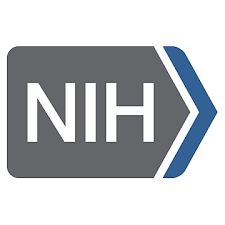Reach and Use of Diabetes Prevention Programs in US
Using data from the National Health Interview Survey, investigators found major gaps in terms of receiving advice and engaging in diabetes risk-reduction activities.

A recent study has found several gaps in receiving advice or referrals and engaging in diabetes risk-reduction activities.
When examining the reach and use of diabetes prevention services in the US, investigators found low rates of diabetes program referrals and gaps based on risk perception, insurance coverage, and whether or not the person received a doctor referral.
Investigators used the responses to the National Health Interview Survey (NHIS), conducted by the National Center for Health Statistics of the Centers for Disease Control and Prevention, and deidentified all data before analyses. The study population included 50,912 non-pregnant, noninstitutionalized, civilian respondents 18 years or older with complete data and no self-reported diabetes diagnosis by their health care professional. Authors noted that this was representative of 223.0 million US adults in 2017.
Investigators diagnosed prediabetes as a positive response to the question: “Other than during pregnancy, have you ever been told by a physician or other health professional that you have borderline diabetes or prediabetes?” For those without a prediabetes diagnosis, investigators used the ADA composite score of diabetes factors and a score of 5 or higher was considered high risk for diabetes.
Investigators found that 36% of participants, equivalent to an estimated 80 million Americans, had no physician diagnosis of diabetes but were at high risk of diabetes based on a diagnosis of prediabetes or an elevated ADA score. Additionally, 22% of those at high risk had diagnosed prediabetes, 91.9% of the high-risk group had an elevated ADA risk score, and 14.1% of those at high risk had both. Authors wrote that of an estimated 145.5 million Americans with elevated body mass index (BMI) who would be eligible for diabetes prevention services, 68.1 million were considered at high risk based on reported prediabetes diagnoses (14.6 million) or an elevated ADA risk score (53.5 million).
Among the estimated 14.6 million at high risk based on reported predates diagnoses, 81% reported undergoing a glucose test in the past year and an additional 13% reported undergoing a glucose test in the past 1 to 3 years. Authors also noted that an estimated 73.5% reported receiving guidance in the past year from their health care professional about activities or programs to lower their diabetes risk. Of that group, 63% reported receiving advice to increase physical activity, 59.2% received advice on to reduce fat or caloric intake, and 21.3% received advice to participate in a weight loss program. Just 4.9% reported receiving a referral to a diabetes prevention program.
Of those advised, 70% reported increasing physical activity, 75.8% reported reducing dietary fat or calorie intake, 35.0% reported participating in weight loss programs, and 39.6% reported participating in programs to prevent diabetes.
Among the estimated 53.5 million adults with elevated BMI and ADA risk scores but no prediabetes diagnosis, lower proportions reported undergoing glucose testing in the past year (69.8% versus 81%). About half (50.6%) of those with elevated BMI and ADA risk scores reported receiving diabetes risk-reduction advice or referral. Becoming more physically active was the most common advice, with 42.3% reporting that as the advice they were given, 35.6% reported being advised to reduce fat or caloric intake, 10.7% were advised to participate in weight loss programs, and .4% were advised to join diabetes prevention programs.
Of those advised, 66.5% reported increasing physical activity, 75.2% reported reducing dietary fat and calories consumed, 33.5% reported participating in weight loss programs, and 40.4% reported participating in programs to prevent diabetes.
Investigators noted that advice from health care professionals, age range from 45 to 64 years, higher educational attainment, health insurance status, gestational diabetes mellitus, hypertension, and obesity were all associated with higher engagement in risk-reducing activities or programs.
In their conclusion, authors noted the results revealed several gaps in terms of receiving advice and engaging in diabetes risk-reduction actives. Additionally, their results suggest that risk perception, health care professional referral and communication, and insurance coverage could be key levers to increase risk-reducing behaviors.
This study, titled “Reach and Use of Diabetes Prevention Services in the United States, 2016-2017,” was published in the Journal of the American Medical Association.